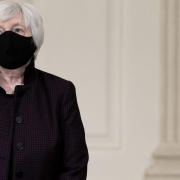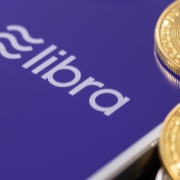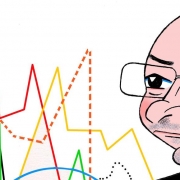The True Challenge With Inflation Is That So Few Know What It Is.
Radio Garden is a website that can be accessed through Google, or in app form through the supercomputer in your pocket that is your smartphone. Radio Garden allows you to “explore live radio by rotating the globe.” In other words, if you’re interested in what they’re saying in Russia’s Moscow, you can listen to the broadcasters there very clearly from Moscow, ID, or anywhere else where you have a worthy internet connection. For those who are wondering, you can do all this for free.
Contrast this with how things were 100 years ago. It was in the 1920s that radios became a thing. They were very expensive, must-have gadgets. RCA (Radio Corporation of America) was the Apple, Amazon, or Google of its day by virtue of it bringing to market what for its time was a technological marvel.
So what happened in the last 100 years? How is it that in 2021 crystal clear radio connections from around the world cost nothing, but radios that broadcast very few local stations very badly were so expensive in 1921? The simple, truthful answer is economic growth.
Economic growth isn’t consumption as economists and their media enablers tell you; rather it’s a consequence of investment. Investment springs from unspent wealth, which means that the more wealth created, the more investment there is. Thanks to copious investment over the last 100 years, the cost of communicating has plummeted, and so has the cost of accessing information from around the world. Curious what’s on the mind of radio hosts in Sydney? Just turn on your computer. It’s that simple. When capital that is always and everywhere a consequence of economic activity is matched with talent, productivity subsequently increases and prices fall. The savings left over after we meet our unmet needs relentlessly rush the future into the present. Economic growth is all about falling prices that we enjoy alongside progress.
But wait a minute, some will say, economists believe that booming economic growth causes economies to “overheat,” with inflation the result. Jeanna Smialek and Jim Tankersley at the New York Times, contend that economic growth has a downside. According to the reporters, too much economic growth causes “overheating,” and yes, inflation. In the defense of each, it could be that they’re just being polite. Figure that their beat is frequently the Federal Reserve, and the Phillips Curve dominates thinking inside the central bank. It’s accepted wisdom inside the Fed that economic growth causes prices to rise.
Quoting Smialek and Tankersley in a recent A1 piece titled “Inflation Fears Fall By the Wayside In the Biden Era,” they indicated a fear among some economists that “overheating” could be a consequence of the $1.9 trillion stimulus bill due to “so many dollars chasing a limited supply of goods and services.” Maybe they’re being too polite? Indeed, their expressed analysis of what inflation is fails in at least three ways.
For one, there’s no “stimulus” to begin with. Governments only have money to spend insofar as they arrogate to themselves a percentage of the growth already taking place in the U.S. economy. Translated for those who need it, the economic growth already occurred; hence the $1.9 trillion for Congress to redistribute. This won’t be $1.9 trillion plucked from Pluto or Mars, rather it will be $1.9 trillion taken from one set of pockets and placed in another set. Which means it won’t be $1.9 trillion in new consumption as much as Congress will depress the stimulated to the tune of $1.9 trillion in order to stimulate the depressed.
And then let’s never forget that all demand begins with production, which is why economies can’t overheat. For there to be $1.9 trillion in consumption, there must be $1.9 trillion in production. These things balance, not to mention that the only closed economy is the world economy. Even if the “output gap” economists obsess over were real, it would be of no consequence in an economically interconnected world.
After which it’s worth re-stating that actual economic growth is a consequence of savings and investment that render the individuals who comprise any economy quite a bit more productive. Which is why economic growth is a sign of falling prices. Individuals don’t “overheat.” By extension, economies don’t.
Still, economists have conveyed to Smialek and Tankersley that inflation is what follows growth, and that fighting it is some brutal slog. Writing about new Treasury secretary Janet Yellen in the aforementioned A1 article, they somewhat fawningly reported that “Yellen spent the bulk of her career fighting in a war against inflation that economists have been waging for more than a half-century.” Battle scars for Yellen? Suffering? No.
Back to reality, inflation is a choice. So is a lack of inflation. There’s no fight about it. After World War I, Germany faced war debts and reparations that its political class didn’t want to pay back. So they foisted it on the citizenry by devaluing the mark. By 1923, $1 bought 4,200,000,000,000 marks. The devaluation was once again a choice. So was the currency reflation. When Germany decided the devaluation was a disaster, it ended it within a week through a reversion to currency-price stability. Inflation is devaluation. Exiting inflation isn’t a war, or a long, brutal battle on some imaginary battlefield. Ending inflation is as simple as monetary authorities reversing currency devaluation.
In short, Yellen’s fight has been an imaginary one. In the 1970s there was a devaluation. That was President Nixon’s intent in severing the dollar’s link to gold. The devaluation of the dollar was decade-long, which was why the stock market and economy stagnated in a relative sense. Investors are buying future returns in currency when they invest, but in the 70s, dollar policy was all about a shrinking of the unit. In the Reagan 80s and Clinton 90s, the malaise-filled dollar policy that had defined the 1970s was reversed. The economy and stock market boomed. This wasn’t a fight. It was just a change in policy.
No doubt there’s lots of mythology about what Fed Chairman Volcker did in the early 1980s, but it’s just that: mythology. It’s rooted in this Phillips Curve misunderstanding that says growth causes inflation, so a lack of inflation must be about central-bank engineered contraction. Nonsense. The mis-named “Volcker recession” was in reality a sign of growth as wealth moved out of inflation hedges (think land, rare art, commodities, rare stamps, etc.) and back into actual investment.
Smialek and Tankersley add somewhere in their report that the 1970s inflation was a consequence of things like wage increases and an “oil embargo.” Of course, to blame inflation for rising prices is like blaming wet pavement for rain. The reporters reverse causation. The dollar was devalued in the 1970s, which meant wages denominated in soggy dollars crept up as dollars were exchangeable for fewer goods and services. As for the oil embargo, no. “Arab oil” flowed to the U.S. just as much after the embargo as before. Rising oil prices were a consequence of a falling dollar, which was what the Nixon administration wanted in the 70s. Same with the Carter administration. When the dollar’s devaluation was reversed in the 80s and 90s, the price of oil plummeted.
All of this speaks to the problem with inflation today. Few know what it is. It’s currency devaluation, which means there’s no inflation fight to speak of. Just don’t devalue, but if you’re devaluing, stop. Reverse course. Inflation will cease. There are no wars to fight. The reporting by Smialek and Tankersley borders on hagiography.














